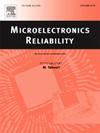不同前驱体沉积的氧化铝层可用于不同的微电子应用
IF 1.6
4区 工程技术
Q3 ENGINEERING, ELECTRICAL & ELECTRONIC
引用次数: 0
摘要
氧化铝薄膜在现代微电子技术中广泛应用于HF蚀刻工艺。在各种微电子应用中,沉积在MEMS器件驱动电极上的薄膜,例如由氧化铝制成的薄膜,可能导致各种充电效应,导致致动器性能下降。这就需要具有低密度缺陷和界面状态的高质量氧化铝层。在本研究中,我们比较了用原子层沉积技术沉积不同氧化剂(臭氧和水)的氧化铝层的电学性能。电容电压测量显示,所有沉积的氧化铝层都含有带负电荷的缺陷,但在臭氧制备的层中,它们的浓度明显更高。我们将讨论这些缺陷的起源。此外,我们还证明了用臭氧制备的层的界面态密度也明显高于用水制备的层。然而,这可以通过改变沉积温度或O3的流量来优化。这些缺陷也会影响电流-电压特性,本研究也对其进行了分析。本文章由计算机程序翻译,如有差异,请以英文原文为准。
Alumina layers deposited with different precursors for different microelectronic applications
Alumina thin films are widely used as barriers in HF etch processes in modern microelectronics. In various microelectronic applications, films deposited on driving electrodes of MEMS devices, such as those made of alumina, might be responsible for various charging effects leading to the degradation of actuator performances. This necessitates high-quality alumina layers with a low density of defects and interface states. In the present study, we compare the electrical properties of alumina layers deposited with different oxidants (ozone and water) using the atomic layer deposition technique. Capacitance-voltage measurements reveal that all as-deposited alumina layers contain negatively charged defects, but their concentration is significantly higher in layers prepared with ozone. The origin of these defects will be discussed. Furthermore, we demonstrate that the density of interface states in layers prepared with ozone is also significantly higher compared to those prepared with water. However, this can be optimized by varying the deposition temperature or the flow of O3. Such defects also influence current-voltage characteristics, which are also analysed in this study.
求助全文
通过发布文献求助,成功后即可免费获取论文全文。
去求助
来源期刊

Microelectronics Reliability
工程技术-工程:电子与电气
CiteScore
3.30
自引率
12.50%
发文量
342
审稿时长
68 days
期刊介绍:
Microelectronics Reliability, is dedicated to disseminating the latest research results and related information on the reliability of microelectronic devices, circuits and systems, from materials, process and manufacturing, to design, testing and operation. The coverage of the journal includes the following topics: measurement, understanding and analysis; evaluation and prediction; modelling and simulation; methodologies and mitigation. Papers which combine reliability with other important areas of microelectronics engineering, such as design, fabrication, integration, testing, and field operation will also be welcome, and practical papers reporting case studies in the field and specific application domains are particularly encouraged.
Most accepted papers will be published as Research Papers, describing significant advances and completed work. Papers reviewing important developing topics of general interest may be accepted for publication as Review Papers. Urgent communications of a more preliminary nature and short reports on completed practical work of current interest may be considered for publication as Research Notes. All contributions are subject to peer review by leading experts in the field.
 求助内容:
求助内容: 应助结果提醒方式:
应助结果提醒方式:


